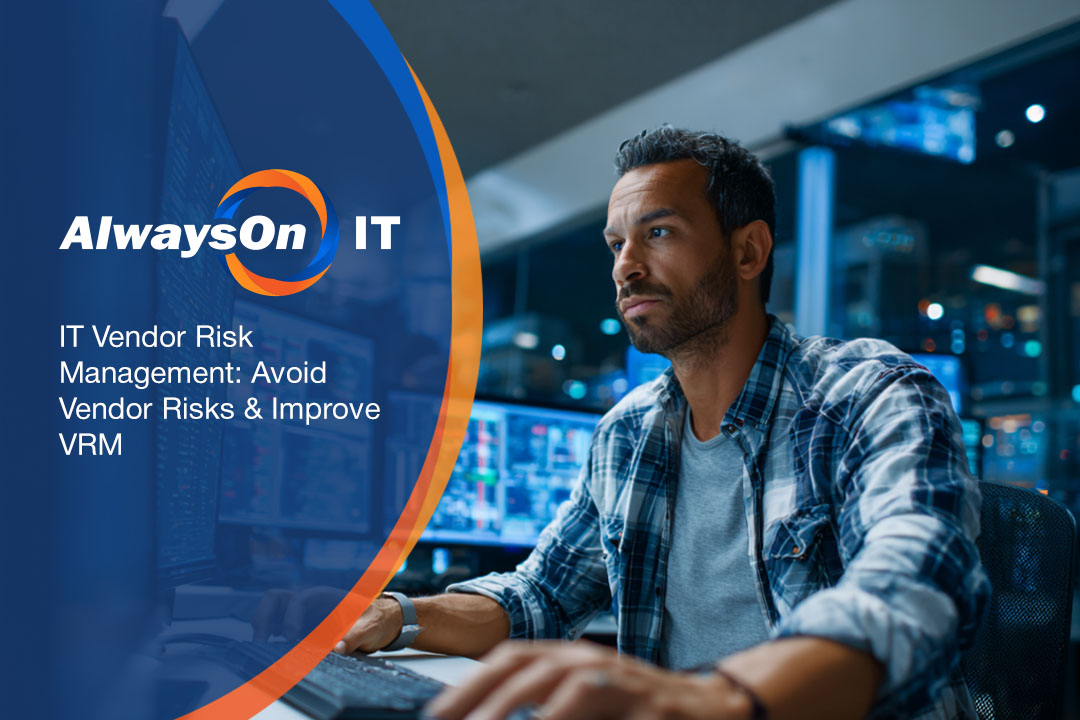October 15, 2025

Managing third-party vendors is no longer just a procurement task—it's a critical part of your cybersecurity and compliance strategy. As your business grows, so does your vendor ecosystem. That means more opportunities for risk. In this blog, we’ll break down what IT vendor risk management is, why it matters, and how to build a reliable risk management program. You’ll also learn how to conduct a third-party risk assessment, avoid common mistakes, and choose the right tools to protect your business.
IT vendor risk management is the process of identifying, assessing, and controlling risks that come from working with third-party vendors. These vendors often have access to your systems, data, or customers, which means their weaknesses can become your problems. Whether it’s a software provider, cloud service, or hardware supplier, every vendor relationship carries some level of risk.
A strong vendor risk management program helps you reduce the chances of data breaches, service disruptions, or compliance failures. It also helps you make better decisions about which vendors to work with and how to manage them over time. This includes performing regular risk assessments, monitoring vendor performance, and updating security controls as needed.
A smart IT vendor risk management strategy doesn’t happen by accident. It takes planning, tools, and consistent action. Below are six key steps to help you build a stronger VRM program.
Start by listing every third-party vendor your business works with. Include what systems or data they access. This helps you understand your vendor ecosystem and prioritize which vendors pose the highest risk.
Not all vendors are equal. A vendor that handles sensitive customer data is more critical than one that supplies office furniture. Classify vendors as high, medium, or low risk based on their access and impact.
For high-risk vendors, conduct a third party security assessment. This includes reviewing their security policies, incident response plans, and past performance. Ask for certifications like SOC 2 or ISO 27001.
Vendor contracts should include clear terms about data handling, breach notification, and compliance requirements. Make sure your legal team reviews these contracts before signing.
Set up a schedule to review vendor performance. This includes checking service levels, compliance status, and any reported incidents. Use scorecards or dashboards to track this over time.
Your risk management program should evolve as your business and vendor list grows. Review your policies, tools, and processes at least once a year to keep them current.
A reliable process for managing vendor risks can protect your business in several ways:

As more businesses rely on cloud services and SaaS tools, the number of third-party vendors has exploded. Each new vendor adds a layer of complexity and potential risk. Cybercriminals often target vendors as a way to access larger companies.
At the same time, regulations like HIPAA, PCI-DSS, and GDPR require businesses to manage vendor risks more closely. Failure to do so can lead to fines, lawsuits, or lost business. That’s why having a clear vendor risk management process is essential.
Vendor risks come in many forms. Here are five common types you should be aware of:
This is the most obvious and dangerous risk. If a vendor has weak security, hackers can use them to access your systems. Always check their security controls and incident response plans.
Vendors that don’t follow laws or regulations can put your business at risk. Make sure they meet the same compliance standards you do.
If a vendor fails to deliver services on time or goes out of business, it can disrupt your operations. Evaluate vendor stability and performance history.
Vendors with financial problems may cut corners or fail to meet obligations. Review their financial health before signing long-term contracts.
If a vendor is involved in a scandal or breach, it can damage your brand. Choose vendors with a strong reputation and track record.

Vendor risk management software can simplify and automate many parts of your program. It helps you track vendors, conduct assessments, and monitor performance in one place.
Look for tools that offer customizable risk scoring, automated workflows, and integration with your existing systems. The right software should also support your management framework and help you meet compliance goals. Be sure to choose a solution that fits your budget and team size.
To keep your vendor risk management program running smoothly, follow these best practices:

Are you a business with 20 or more employees looking for a better way to manage vendor risks? As your company grows, so does the need for structured processes to protect your data, systems, and reputation.
At AlwaysOnIT, we help businesses like yours build and maintain strong IT vendor risk management programs. From third party security assessments to vendor monitoring tools, our team provides the support and solutions you need to stay secure and compliant.
A vendor risk assessment is the process of evaluating a third-party vendor’s potential to harm your business. This includes looking at their security practices, compliance status, and operational reliability. It helps you identify vendor risks before they become real problems.
By conducting a proper assessment, you can manage vendor relationships more effectively and reduce your exposure to cybersecurity risk. It’s a key part of any risk management program.
Start by identifying all third-party vendors and classifying them by risk level. Then, create a process for performing regular assessments and monitoring vendor performance. Make sure to include legal and IT teams in the process.
A strong vendor risk management program should also include clear policies, documentation, and tools to support your efforts. It helps you manage risks across departments and stay compliant with regulations.
The most common types include cybersecurity risk, compliance risk, operational risk, financial risk, and reputational risk. Each one can affect your business in different ways.
Understanding the types of vendor risks helps you prioritize which vendors need more attention. It also supports better decision-making when choosing or renewing vendor contracts.
Vendor risk management software helps automate assessments, track vendor performance, and store documentation in one place. It saves time and reduces manual errors.
Using the right software also supports your management framework and improves your ability to monitor vendor risk exposure. It’s especially useful for growing businesses with multiple third-party vendors.
High-risk vendors should be assessed at least once a year. For lower-risk vendors, every 18–24 months may be enough. Always reassess after major changes or incidents.
Regular third party security assessments help you evaluate vendor performance and keep your risk management lifecycle up to date. It’s a proactive way to protect your business.
Vendor management focuses on contracts, performance, and compliance. Vendor relationship management is about building strong, long-term partnerships with key vendors.
Both are important. Together, they help you manage vendor risks, improve service quality, and support your overall risk management processes.